Text this colour links to Pages. Text this colour links to Family Trees. Place the mouse over images to see a larger image. Click on paintings to see the painter's Biography Page. Mouse over links for a preview. Move the mouse off the painting or link to close the popup.
Great Witley, Worcestershire is in Worcestershire.
On 8th January 1766 Thomas Foley 2nd Baron Foley (age 63) died without issue. Baron Foley extinct. The estates of Great Witley, Worcestershire were inherited by his second cousin once-removed Thomas Foley (age 49) who was created 1st Baron Foley of the second creation.
Saint Michael and All Angels Church, Great Witley, Worcestershire, South-Central England, British Isles [Map]
Saint Michael and All Angels Church, Great Witley is also in Churches in Worcestershire.
Saint Michael and All Angels Church, Great Witley [Map]
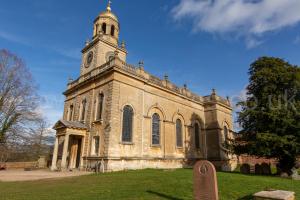
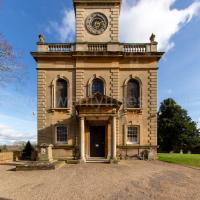
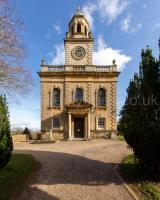
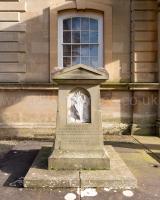
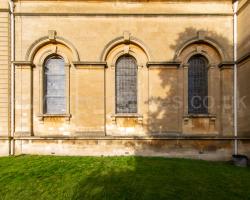
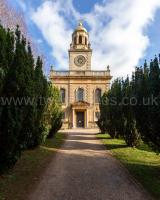
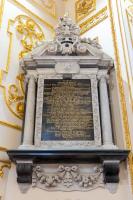
After 1677. Monument at Saint Michael and All Angels Church, Great Witley [Map] to Thomas Foley.
Thomas Foley: In 1617 he was born to Richard Foley and Alice Brindley. Before 27th November 1638 Thomas Foley and Anne Browne were married at St Saviour's Church, Southwark. She inherited considerable welath from her father including a number of landed estates. Around 1654 Thomas Foley bought Witley Court, Worcestershire from William Russell 1st Baronet. The Foley's remained at Witley Court for the next two hundred years, enlarging the original Jacobean house. In 1677 Thomas Foley died.
After 22nd January 1733. Monument at Saint Michael and All Angels Church, Great Witley [Map] to Thomas Foley 1st Baron Foley (deceased) sculpted by John Michael Rysbrack (age 38).
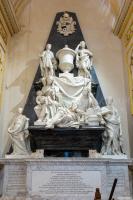
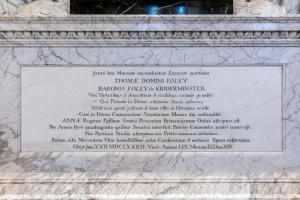
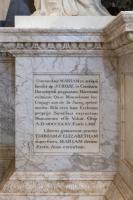
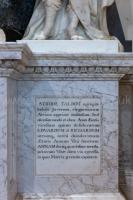
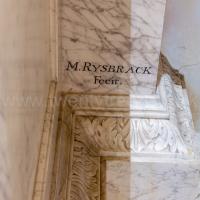
In 1747 Saint Michael and All Angels Church, Great Witley [Map] was transformed. Thomas Foley 2nd Baron Foley (age 44) acquired by private sale from the Duke of Chandos' Canons Palace, Edgeware, near London the ten stained glass windows and the oil on canvas paintings which were placed insitu on a new curved ceiling, purpose built to hold the central painting 'The Ascension'. This painting is stretched onto a wooden curved frame. The organ and pipes were also included in the private sale. The moulds for the wall and ceiling decorations were taken from the original designs of the plasterwork at Canons and recreated from papier mache. Papier mache had just been perfected by Henry Clay of Birmingham.
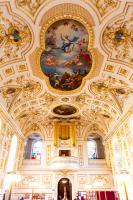
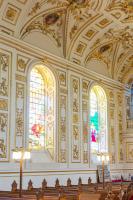
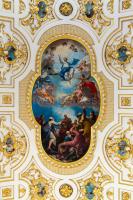
Thomas Foley 2nd Baron Foley: In 1703 he was born to Thomas Foley 1st Baron Foley and Mary Strode. On 22nd January 1733 Thomas Foley 1st Baron Foley died. His son Thomas succeeded 2nd Baron Foley. In 1740 Thomas Foley 2nd Baron Foley was elected Fellow of the Royal Society. On 8th January 1766 Thomas Foley 2nd Baron Foley died without issue. Baron Foley extinct. The estates of Great Witley, Worcestershire were inherited by his second cousin once-removed Thomas Foley who was created 1st Baron Foley of the second creation.
On 16th April 1833 Thomas Foley 3rd Baron Foley (age 52) died. He was buried at Saint Michael and All Angels Church, Great Witley [Map]. His son Thomas (age 24) succeeded 4th Baron Foley of Kidderminster in Worcestershire.
All About History Books
The Chronicle of Abbot Ralph of Coggeshall describes the reigns of Kings Henry II, Richard I, John and Henry III, providing a wealth of information about their lives and the events of the time. Ralph's work is detailed, comprehensive and objective. We have augmented Ralph's text with extracts from other contemporary chroniclers to enrich the reader's experience. Available at Amazon in eBook and Paperback.
In 1861 James Forsyth (age 33) was commissioned to restore Saint Michael and All Angels Church, Great Witley [Map]. He added the font, pulpit and pews.
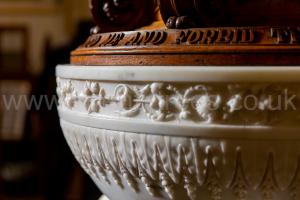
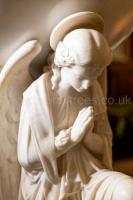
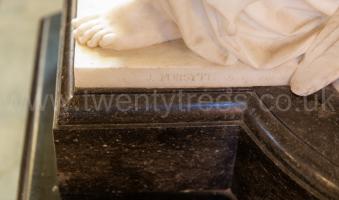
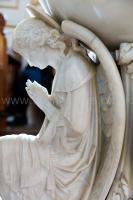
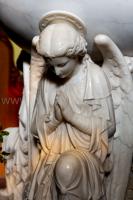
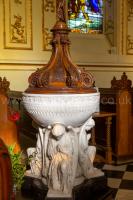
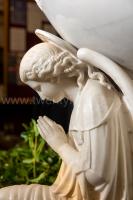
In 1913 Rachel Anne Gurney Countess Dudley (age 45) commissioned a new reredos at Saint Michael and All Angels Church, Great Witley [Map] from Salviati of Venice. The three lamps hanging in the sanctuary were given by the Countess in thanks for her husband (age 45) and his two brothers [John Hubert Ward (age 42) and Robert Arthur Ward (age 41)] returning safely from the Boer War. The initials on the mosaics appear to be those of the three brothers.
Witley Court, Worcestershire, Great Witley, South-Central England, British Isles
Around 1290 the first Lord of the Manor of Witley, Sir Walter Cooksey, held the estate including the original medieval manor house.
Around 1654 Thomas Foley (age 37) bought Witley Court, Worcestershire from William Russell 1st Baronet (age 79). The Foley's remained at Witley Court for the next two hundred years, enlarging the original Jacobean house.
In 1833 the Foley family sold Witley Court, Worcestershire to the Trustees of William Ward 1st Earl of Dudley (age 15), then a minor, who would become the Earl of Dudley of Dudley Castle in Staffordshire.
From 1843 to 1846 Queen Adelaide of England (age 50) lived at Witley Court, Worcestershire.
In 1850 William Ward 1st Earl of Dudley (age 32) commissioned Samuel Daukes to remodel Witley Court, Worcestershire. He added an exterior of Bath Stone in an Italianate style, and a new curved wing which led to a conservatory.
In 1920 Herbert Smith, a Kidderminster carpet manufacturer, bought Witley Court, Worcestershire from William Humble Ward 2nd Earl of Dudley (age 52).
In 1937 a fire started in the bakery at Witley Court, Worcestershire. It quickly spread. By the following day the house was in ruins except for the west side. Herbert Smith sold the house which was subsequently stripped and abandoned.
In 1972 waht remains of Witley Court, Worcestershire was taken into Government care. It is now manged by English Heritage.